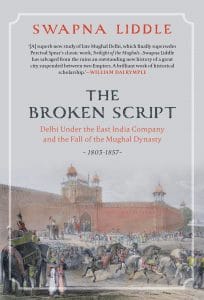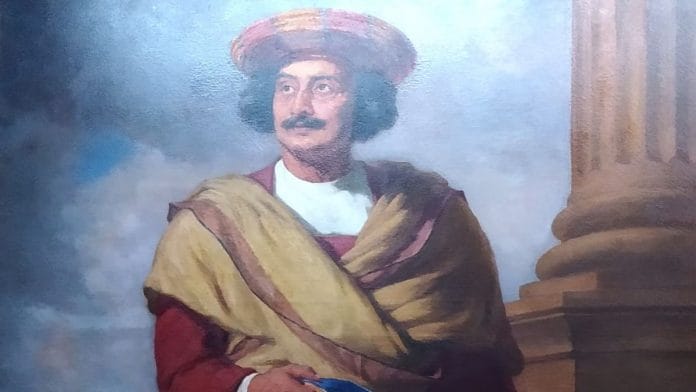Throughout his reign Akbar had faced challenges to his authority from within his own family. The perceived power of the government vis-a-vis the Emperor prompted many members of the royal family to seek the government’s mediation in all sorts of personal conflicts with the Emperor. When Akbar had proposed that Mirza Jahangir be married to the daughter of Sulaiman Shukoh—his brother who was living in Lucknow—the latter promptly wrote to the Governor General. First of all, since the young prince had offended the government, he wanted permission in writing from the government that the match might be entered into. He also wished to have it made clear that, in case ‘after the connection is made, through the Prince’s unfortunate temper, of which your Lordship is aware, he should at any time misbehave towards my daughter, I shall have to represent it to your Lordship’s notice.’ The government informed him that he must do as he thought fit and not rely on the government’s opinion or intervention.
A major reason for domestic strife was also the Emperor’s relationship with Abu Zafar, his firstborn. Zafar was acutely aware that his father wished to bypass him in the succession to the throne, first being in favour of Jahangir, and then, when that did not work out, pushing the case of another son, Salim. There were other ways in which the actions of his father threatened Zafar’s future as Emperor. In 1820, he complained to Ochterlony, that the Emperor had granted Begum Samru some fifty thousand yards of land in the city, near the garden known as Begum ka Bagh. This probably adjoined the plot of land the Begum had purchased in 1807, in the heart of the city, to build a grand house. Zafar complained that this grant was against the orders of Metcalfe, who had prohibited the alienation of crown property in this manner. Zafar also complained repeatedly against individuals around his father who he felt were conspiring against his interests. One such complaint in 1830 was directed against various people of ‘vulgar origins’ who had secured positions of importance under his father.
A major threat, as far as Zafar was concerned, loomed in 1829, when his father engaged Rammohan Roy, the great Bengali reformer, with the task of proceeding as the Emperor’s ambassador to the monarch of Britain. Since it was understood that the right of the Emperor to appoint his heir would be one of the points of the embassy, Zafar was understandably suspicious and resentful.
Rammohan on his part did not want to be acting behind the back of the government at Calcutta, so he was careful to forward to Fort William a copy of Akbar’s letter to George IV. The letter, which is likely to have been drafted by Rammohan Roy and approved by Akbar, provides an interesting insight into how the relationship between the new and the old powers in India was viewed. It said:
‘Sire! My brother! It is with a mingled feeling of humility and pride that I approach your Majesty with the language of fraternal equality at the very time that the occasion of my addressing your Majesty compels me to consider myself rather as a supplicant at the footstool of your Majesty’s throne than as a monarch entitled to assume the style and claim the privileges of royalty….I cannot forget that I am a king only in name…your Majesty is the rightful and acknowledged sovereign of a powerful, a wise and renowned people.’
It was a letter that underlined the dignity of the house of Timur. Yet it acknowledged the realities of power and put forward the claims of the Emperor not as an entitlement due to regal status but based on the promises made by the British Government not so long ago. A major point the letter addressed was the issue of the stipend. The Emperor pointed to the meagre increases made in the allowance, in complete violation of the promises made to his father by the Company. With this letter, Rammohan proceeded to England, though the government refused to recognize his status as envoy of the Mughal Emperor, or indeed the title of ‘Raja’, which the Emperor had bestowed on his envoy. He circulated a document arguing the claims of the Emperor on the Company, but received no reply to either the letter or the document.
Also read: Was there a Mughal bias in Indian history textbooks? Yes, but not a Muslim one
Zafar complained to the British Government about the mission of Rammohan Roy to England. The Emperor had himself claimed that it was Khwaja Farid who had introduced Rammohan Roy to the court, because of an old Calcutta connection. Zafar refuted this claim, saying that the letter of introduction that purported to come from Khwaja Farid (who had died in 1828) was a forgery, perpetrated by some unscrupulous persons around the Emperor, including his mukhtar, Sohan Lal, another official named Afzal Beg, and Zafar’s own brother, Mirza Salim.
 This excerpt from Swapna Liddle’s The Broken Script: Delhi Under the East India Company and the Fall of the Mughal Dynasty has been published with permission from Speaking Tiger Books.
This excerpt from Swapna Liddle’s The Broken Script: Delhi Under the East India Company and the Fall of the Mughal Dynasty has been published with permission from Speaking Tiger Books.






